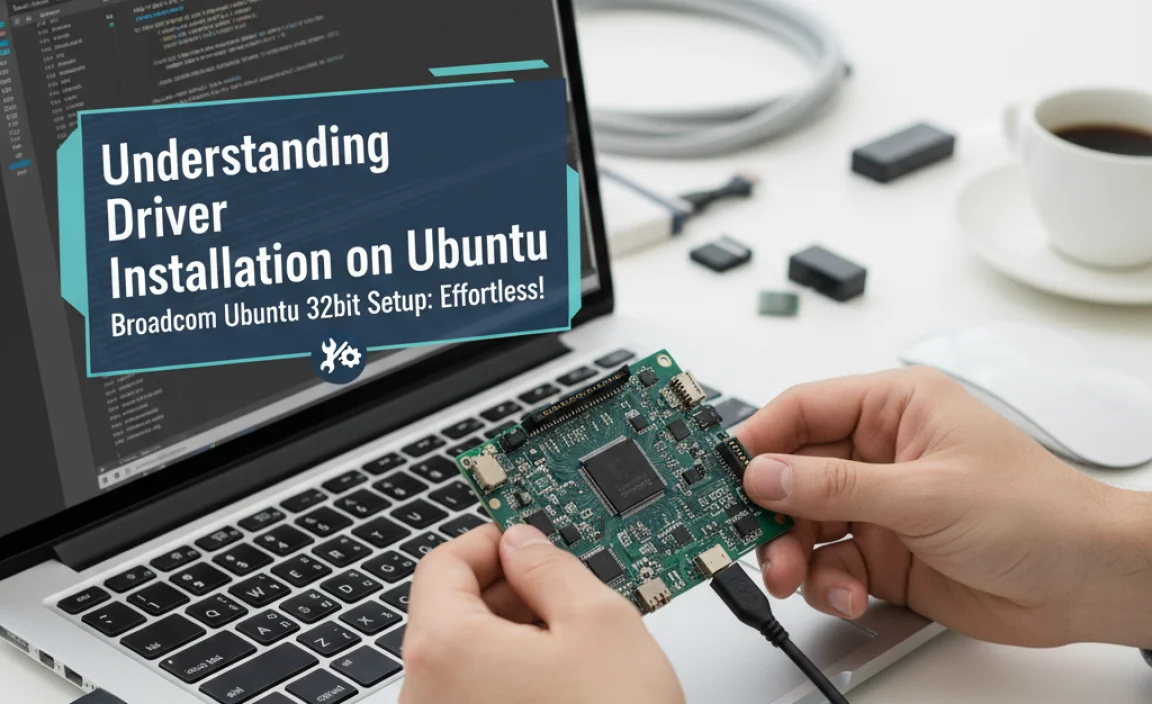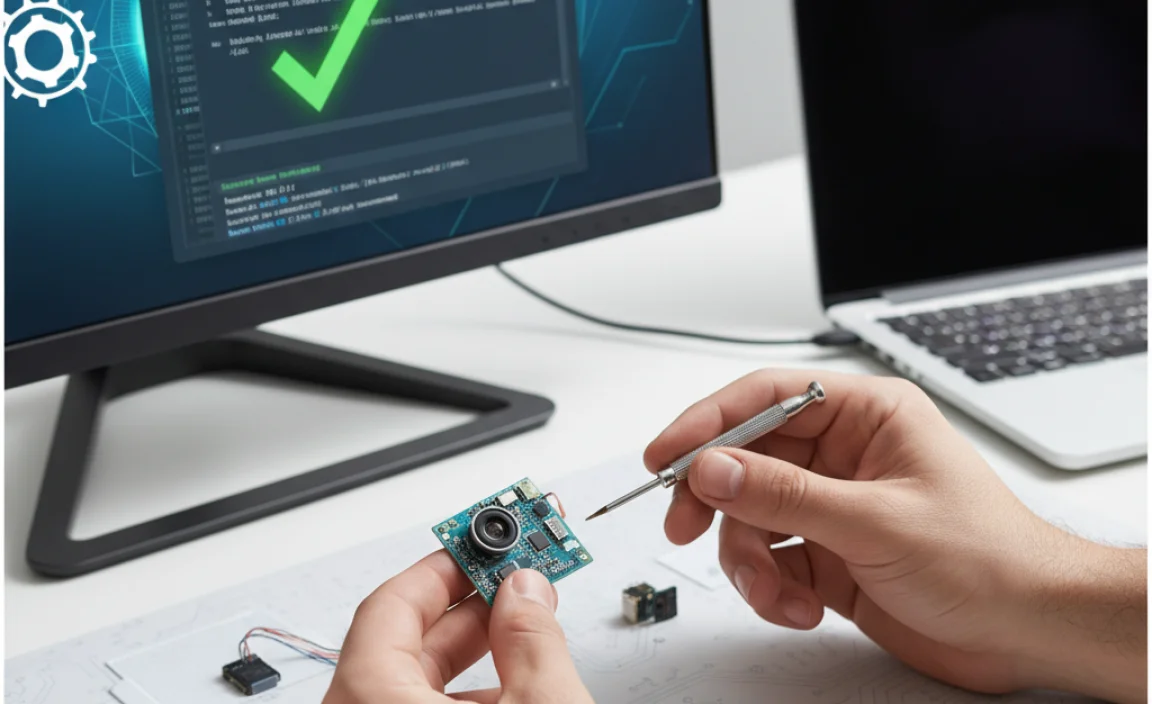Setting up your Broadcom hardware on an Ubuntu 32-bit system might seem like a daunting task given the prevalence of 64-bit operating systems these days.
However, with the right approach and a sprinkle of patience, the process, especially for your camera, can indeed be remarkably straightforward. This guide aims to demystify the Broadcom webcam driver setup for Ubuntu 32 bit, ensuring you can get your beloved camera up and running without undue frustration.
The journey often begins when you plug in your Broadcom webcam, only to find… nothing. Ubuntu, while excellent at hardware detection, sometimes needs a little nudge, especially for older or less commonly supported hardware combinations. The good news is that for many Broadcom webcams, the necessary drivers are either already present in the kernel or readily available through Ubuntu’s software repositories. The trick lies in knowing where to look and what commands to use.
Understanding Driver Installation on Ubuntu

Before diving into the specifics of Broadcom drivers, it’s helpful to understand how Ubuntu generally handles driver installations. Linux distributions, including Ubuntu, strive for “out-of-the-box” hardware support. This means that many common hardware components will work as soon as you install the operating system. For other devices, especially those requiring proprietary drivers or firmware, additional steps are necessary. These steps usually involve:
Automatic Detection: Ubuntu attempts to identify your hardware and load appropriate modules.
Proprietary Drivers: For certain devices (like Wi-Fi cards and graphics cards), manufacturers provide proprietary drivers. Ubuntu offers a convenient way to install these through the “Additional Drivers” or “Software & Updates” utility.
Manual Installation: In some cases, you might need to download drivers from the manufacturer’s website or compile them from source. This is less common for webcams but can be necessary for specific models.
For your Broadcom webcam driver setup for Ubuntu 32 bit, we’ll primarily be focusing on the first two methods, as they cover the vast majority of successful installations.
Troubleshooting Your Broadcom Webcam

If your Broadcom webcam isn’t immediately recognized, don’t panic. Here’s a systematic approach to troubleshooting:
1. Check Hardware Recognition:
Open a terminal (Ctrl+Alt+T).
Type `lsusb` and press Enter. This command lists all USB devices connected to your system. Look for an entry that resembles your Broadcom webcam. If it appears here, your system is at least detecting the hardware.
Next, try `dmesg | grep -i broadcom`. This command shows kernel messages, and filtering for “broadcom” can reveal any relevant information or error messages related to the device.
2. Utilize the “Additional Drivers” Tool:
This is often the easiest first step for proprietary hardware.
Open “Software & Updates” from your application menu.
Navigate to the “Additional Drivers” tab.
Ubuntu will scan your system for hardware that requires proprietary drivers. If a driver for your Broadcom webcam is available, it will be listed here.
Select the recommended driver and click “Apply Changes.” You may need to reboot your system afterwardsfor the changes to take effect.
3. Manual Driver Installation (Rarely Needed for Webcams):
In the rare event that the “Additional Drivers” tool doesn’t find anything, and `lsusb` shows your webcam but it’s still not working, you might need to explore manual installation.
First, identify the exact model of your Broadcom webcam. This information can sometimes be found on a label on the webcam itself or in its original packaging.
Search online specifically for “[Your Webcam Model] Ubuntu 32 bit driver.” If you find a driver package (often a `.deb` file or source code), follow the instructions provided by the vendor or the community. Be extremely cautious when downloading drivers from unofficial sources, as they can pose security risks.
Specific Steps for Broadcom Webcam Drivers on 32-bit Ubuntu
While there isn’t a universal “one-click” solution for every Broadcom webcam, certain drivers are more common. For older Broadcom chips, you might encounter references to packages like `bcmwl-kernel-source` (often for Wi-Fi, but sometimes related to other Broadcom components) or specific webcam driver modules.
Ensure You Have Necessary Software Updates:
Before anything else, make sure your system is up-to-date.
Open a terminal and run:
“`bash
sudo apt update
sudo apt upgrade
“`
This ensures you have the latest kernel and available driver packages.
Consider the `firmware-linux-nonfree` Package:
Some Broadcom devices require non-free firmware to function correctly. While primarily associated with Wi-Fi, it’s worth ensuring this package is installed.
Open a terminal and run:
“`bash
sudo apt install firmware-linux-nonfree
“`
A reboot might be necessary after installation.
The `v4l-utils` Package:
This package provides utilities for Video4Linux, the framework Ubuntu uses for camera devices. It can be helpful for diagnosing issues.
Install it with:
“`bash
sudo apt install v4l-utils
“`
Once installed, you can use `v4l2-ctl –list-devices` to see if your webcam is recognized by the Video4Linux system.
When to Seek Community Help:
If you’ve exhausted the standard troubleshooting steps and are still facing issues with your Broadcom webcam driver setup for Ubuntu 32 bit, localizing the problem to a specific driver module or firmware might be necessary. In such cases, posting your `lsusb` output, `dmesg` logs, and the exact webcam model on Ubuntu forums or relevant Linux communities can yield targeted solutions from users who have encountered similar problems.
In conclusion, while setting up hardware can sometimes feel like a puzzle, getting your Broadcom webcam working on an Ubuntu 32-bit system is usually achievable. By starting with the built-in tools, ensuring your system is updated, and using the power of online communities when needed, you can look forward to effortless video calls and camera functionality.

